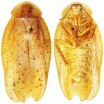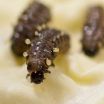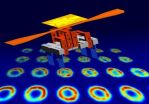(Press-News.org) Bethesda, MD—Earth Day may be more than a month away, but another, more personal, ecosystem has been shown to also be worth protecting—within our bodies are communities of microbes that affect the behavior of human cells hosting them. These communities, called the "microbiome," are so crucial to our health that some consider it to be a complex "second genome." Understanding the interaction of these microbes among one another and their human hosts has the potential to yield insights into numerous diseases and complex human disorders from obesity to susceptibility to infection. In a new report appearing in the March 2013 issue of The FASEB Journal, scientists take an important step toward designing a uniform protocol for microbiome research that ensures proper controls and considerations for variations among people. By doing this, future researchers should be able to better assess how what we ingest, whether drugs or food, affects our bodies.
"While historically pre and probiotics have dominated the microbiome landscape, emerging data from numerous labs as to the impact of dietary interventions and antibiotic exposure will play formative roles in tailoring therapy," said Kjersti M. Aagaard, M.D., Ph.D., from the Department of Obstetrics and Gynecology at Baylor College of Medicine in Houston, Texas. "We may find that the answers to our most common and prevalent health and disease states lies not in manipulating the human genome, but rather, in utilizing subtle shifts in diet and components of the diet, efficacy trials in prophylactic or preventative antibiotic therapies, and care attention to the over prescription of steroids and antibiotics."
Aagaard and colleagues completed comprehensive body site sampling in healthy 18-40 year old adults, creating an unparalleled reference set of microbiome specimens. Researchers then screened 554 individuals to enroll 300 (149 males, 151 females, mean age 26, mean BMI 24, 20.0 percent racial minority and 10.7 percent Hispanic). Scientists obtained specimens from several body sites to evaluate the longitudinal changes in an individual's microbiome by sampling 279 participants twice (mean 212 days after first sampling, range 30-359), and 100 individuals three times (mean 72 days after second sampling, range 30-224). This sampling strategy yielded 11,174 primary specimens, from which 12,479 DNA samples were submitted to four centers for metagenomic sequencing. This clinical design and well-defined reference cohort has laid a baseline foundation for microbiome research.
"Whether it is yogurt, penicillin, or diet soda, each alters the microbial communities that live within us," said Gerald Weissmann, M.D., Editor-in-Chief of The FASEB Journal. "This pioneering study promises to provide their names and numbers, so that we can understand how diet, disease or drugs affect our internal ecosystem."
###
Receive monthly highlights from The FASEB Journal by e-mail. Sign up at http://www.faseb.org/fjupdate.aspx. The FASEB Journal is published by the Federation of the American Societies for Experimental Biology (FASEB). It is among the most cited biology journals worldwide according to the Institute for Scientific Information and has been recognized by the Special Libraries Association as one of the top 100 most influential biomedical journals of the past century. FASEB is composed of 26 societies with more than 100,000 members, making it the largest coalition of biomedical research associations in the United States. Its mission is to advance health and welfare by promoting progress and education in biological and biomedical sciences through service to its member societies and through collaborative advocacy.
Details: Kjersti Aagaard, Joseph Petrosino, Wendy Keitel, Mark Watson, James Katancik, Nathalia Garcia, Shital Patel, Mary Cutting, Tessa Madden, Holli Hamilton, Emily Harris, Dirk Gevers, Gina Simone, Pamela McInnes, and James Versalovic. The Human Microbiome Project strategy for comprehensive sampling of the human microbiome and why it matters. FASEB J March 2013 27:1012-1022, doi:10.1096/fj.12-220806 ; http://www.fasebj.org/content/27/3/1012.abstract. END
A European study published in the 'Cancer Epidemiology, Biomarkers & Prevention' journal has analysed the association between physical activities and in situ or non-invasive breast cancer, or, in other words, cancer that has not yet invaded cells within or outside of the breast.
Headed by researchers from ten European countries including Spain, the work carried out under the framework of the European Prospective Investigation into Cancer and Nutrition (EPIC) concludes that physical activity has no relation with the risk of developing this type of non-invasive cancer. ...
Bethesda, MD—Here's another reason why a healthy diet during pregnancy is critical to the future health of your children: New research published in the March 2013 issue of The FASEB Journal, suggests that pregnant mothers who consume junk food actually cause changes in the development of the opioid signaling pathway in the brains of their unborn children. This change results in the babies being less sensitive to opioids, which are released upon consumption of foods that are high in fat and sugar. In turn, these children, born with a higher "tolerance" to junk food need ...
A group of international ecological scientists led by the University of Adelaide have rejected a doomsday-like scenario of sudden, irreversible change to the Earth's ecology.
In a paper published today in the journal Trends in Ecology and Evolution, the scientists from Australia, US and UK argue that global-scale ecological tipping points are unlikely and that ecological change over large areas seem to follow a more gradual, smooth pattern.
This opposes recent efforts to define 'planetary tipping points' ‒ critical levels of biodiversity loss or land-use change ...
Cockroaches (Blattodea) are an insect order remarkable in their biodiversity and distribution, with more than 4500 species known and great geographical reach. Cockroach fossils date back around 400 million years, which testifies to their great adaptability and endurance that puts them among the planet's great survivors.
The cockroach genus Pseudophoraspism has has been reported from China for the first time thanks to the discovery of three new species: Pseudophoraspis clavellata, Pseudophoraspis recurvata and Pseudophoraspis incurvata, alongside the first regional record ...
This press release is available in German.
Max Planck scientists in Jena, Germany, have discovered an unusual regulation of enzymes that catalyze chain elongation in an important secondary metabolism, the terpenoid pathway. In the horseradish leaf beetle Phaedon cochleariae a single enzyme can trigger the production of two completely different substances depending on whether it is regulated by cobalt, manganese or magnesium ions: iridoids, which are defensive substances the larvae use to repel predators, or juvenile hormones, which control insect's development. Insects ...
A team of researchers led by Associate Professor Yan Jie from the Department of Physics at the National University of Singapore (NUS) Faculty of Science has identified three new distinct overstretched deoxyribonucleic acid (DNA) structures caused by mechanical stretching. This discovery provides a clear answer to a long-running debate among scientists over the nature of DNA overstretching.
Debate on Possible DNA Structural Transitions
Recent single-molecule studies revealed that mechanical stretching could induce transitions to elongated DNA structures. Three possible ...
This press release is available in German.
Ice cubes in a cocktail glass melt until an equilibrium state is reached in which the ice cubes are gone. After that, the geometric shape of the ice cubes is completely lost. The liquid does not contain any memory of their shape, the ordered ice crystal has turned into disordered water molecules. Ultra cold Bose-Einstein condensates behave differently; these highly ordered clouds of ultra cold particles also approach a disordered equilibrium state, but they retain some "memory" about their initial state for a remarkably long ...
ROCHESTER, Minn. — Patients with pneumonia may spend fewer days in the hospital if they are given steroids along with antibiotics and supportive care. That's the finding of a Mayo Clinic analysis of eight randomized-controlled clinical trials involving more than 1,100 patients. The results appear in the March issue of the Journal of Hospital Medicine.
"Given that the average hospital stay for community-acquired pneumonia can range from nine to 23 days, the prospect of speeding recovery, even by a day or two, is helpful," says co-author M. Rizwan Sohail, M.D., a Mayo infectious ...
Having more control in the workplace can have negative consequences for individuals but it depends on the form of job control, according to new research out of the University of Toronto.
Sociologist Scott Schieman measured a range of work conditions using data from a national survey of 6,004 Canadian workers. To measure levels of job pressure, he asked study participants questions such as: "How often do you feel overwhelmed by how much you had to do at work?" "How often do you have to work on too many tasks at the same time?" and "How often do the demands of your job ...
Using new technology at the telescope and in laboratories, researchers have discovered an important pair of prebiotic molecules in interstellar space. The discoveries indicate that some basic chemicals that are key steps on the way to life may have formed on dusty ice grains floating between the stars.
The scientists used the National Science Foundation's Green Bank Telescope (GBT) in West Virginia to study a giant cloud of gas some 25,000 light-years from Earth, near the center of our Milky Way Galaxy. The chemicals they found in that cloud include a molecule thought ...




